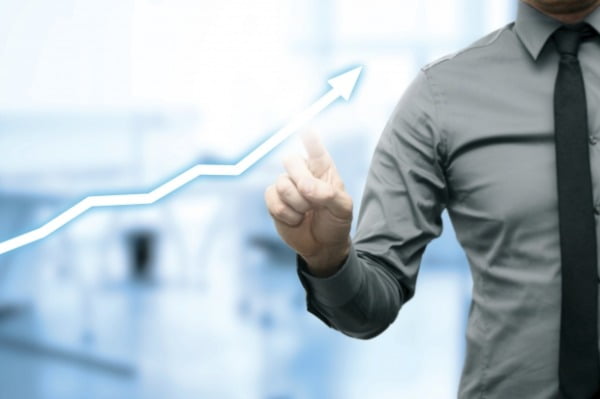
Photo = Getty Image Bank
In May 2017, Hong Kong Credit Riyon Securities (CLSA) released a report titled’President Moon Jae-in paving the way to the KOSPI 4000′. In 2022, when the government’s term of office ends, the KOSPI will reach 4,000 points, and it is predicted that the annual yield will be 15%.
After 2 years and 8 months, the KOSPI surpassed 2900. It’s just 9.43 points ahead of 3000. However, opinions on whether the 4000 can be approached beyond the early 3000 are mixed. In the past, it seems that it is not just an impossible scenario.
◆500% increase in 1980s
Last year, the KOSPI rose 30.75%. This is the result of individuals buying more than 47 trillion won thanks to the liquidity rally. On the 5th, it ended at 2990.57, up 1.57%. As the KOSPI surged, the 12-month leading price-earnings ratio (PER) also exceeded 14x. This is the background of the high-valuation controversy, which is the highest since 2007.
However, even in the past liquidity rally, there was a valuation controversy. According to an internal report by Samsung Securities, despite the price controversy during the liquidity rally between 1985 and 1989, the KOSPI surged more than 500%. This is why it is difficult to interpret the current stock market as overheating.
Sa Jae-hoon, head of Samsung Securities’ channel sales division, predicted that “the original liquidity market rises with overvaluation and overheating controversy.” “There is a possibility that this year’s stock market will rise as well as last year.”
◆Fire ants in the past
The stock market in the 1980s was similar to what it is now. The economic situation was different due to the’third low boom’, but the fact that the liquidity rally was unfolded and that the ants led the rally were the same. Individual investors led the stock market at a time when foreign participation was restricted. Director Seo said, “Donghak ants are making various records now, but they cannot be compared with the late 1980s.”
At the end of December 1980, the KOSPI index was only 106.87. By the way, it rose to 164.37 at the end of 1985, and from this point on, the rapid rise began. The KOSPI, which closed at 272.61 at the end of 1986, rose to 909.72 at the end of 1989. It recorded an increase of 525% in just five years. The number of individual investors also increased from 75,4363 at the end of 1985 to 1896,8277 at the end of 1989. This is a 25-fold increase in 5 years.
It is worth noting that there was a controversy over high evaluation at the time. Due to the short-term surge, the KOSPI PE soared from 1985 (5.2x) to 1987 (10.9x) → 1989 (13.9x). On the other hand, the growth rate of manufacturing sales increased from 9.8% in 1985 to 22.6% in 1987, but fell to 15.8% in 1988 and declined to 7% in 1989. It was a typical liquidity market that rises with the power of money rather than performance.
The United States in the 1990s is similar
It is analyzed that the 1990s, which led the longest rally in the United States, were similar. The US stock market began to rise in the 1990s, when the First Gulf War broke out. In 1996, Alan Greenspan, then chairman of the Federal Reserve, warned of a bubble saying that it was’irrational overheating’, but the stock market continued to rise for the next three years. After the Greenspan warning, the Nasdaq index tripled, and the Nasdaq PER at the time exceeded 100x.
In May 2017, CLSA predicted the KOSPI 4000, saying, “Reforms such as eradication of political and economic relations, reform of chaebols, strengthening the exercise of national pension shareholder rights, establishment of minority shareholder rights, etc.” Considering that the stock market has risen due to the liquidity market due to Corona 19 and the expansion of new businesses by companies, it cannot be said that the prediction was correct. However, expectations are likely to dominate the stock market this year.
The securities industry expects the liquidity market to continue this year. This is because the U.S. government has announced that it will not raise interest rates until 2023, and is expected to follow Gyeonggi Province’s performance with the spread of the Corona 19 vaccine.
Seo said, “It is impatient to worry about overvaluing over the rise that has progressed for eight months now. We must not forget that the domestic liquidity market in the 1980s also went on for three years and four months.”
Reporter Park Uimyung [email protected]
